The iconic four-day Inca Trail trek to Machu Picchu is a bucket list experience for many. Using a clear rating system, I share my honest review of the experience, along with firsthand tips.
Lists By Lukiih is readers-supported. When you buy with my affiliate link, I may earn a small commission. Thanks!
🍀 Lukiih’s Verdict
The Inca Trail is a must-do experience in Peru. The trek was the highlight of my trip.
- The hike passes through cloud forests, ancient ruins, and breathtaking views and ends at one of the world’s most remarkable ruins and Seven Wonders of the World.
- The experience requires a tour company that provides permits, transportation, accommodation, meals, entrance fees, guides, and porters, and they’re typically moderately priced.
- Extensive preparation is required, as the hike demands endurance, careful packing, and advanced reservations.

Planning a trip? Here’s what to know about Peru.
🏆 Where Does It Rank?
The Inca Trail ranks as the #1 experience I had in Peru. Here’s how it compares to other things I did on my trip:
My Peru itinerary features the above experiences.
✈️ About My Trip
For context on my review, here’s what to know about my trip:
- I finance my trips and don’t receive sponsorship; this review reflects my honest opinions.
- This post has updated 2024 information, but I hiked the Inca Trail in 2022.
- My Peru trip was in April when it was becoming more crowded and expensive.
- The Inca Trail to Machu Picchu is an irreplaceable experience worldwide. Nestled in a remote location in the Andes Mountains, Machu Picchu is one of the ancient world’s archaeological marvels. It’s the most visited ancient ruin globally, but less than 5% of visitors reach it by hiking.
To slow erosion, the Peruvian government has set a limit of 500 daily hiking permits, which goes to roughly 300 guides/porters and 200 tourists.
- Machu Picchu is massive and breathtaking against the backdrop of Huayna Picchu’s peak. The views and Incan ruins along the trek are also stunning and significantly less crowded.
The Inca Trail is believed to have been the same route the Incas took back in the 15th century.
- Other hikes to ancient ruins exist (e.g., Jordan’s Petra and Guatemala’s Tikal), but none are as iconic as the Inca Trail.
- The trail is in the Andes Mountains and winds through a cloud forest, so fog and rain can make the hike less scenic.
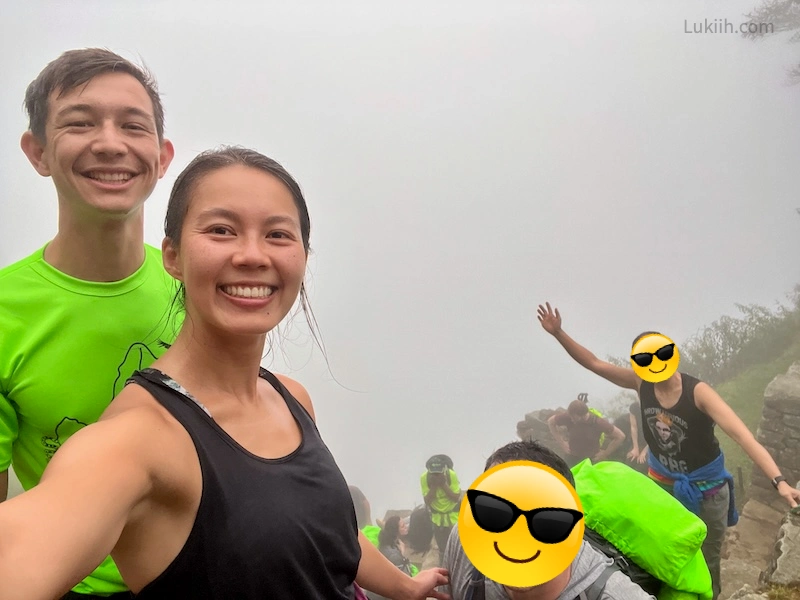
Hiking during the dry season (April to November) reduces the chance of rain. I went in April and still got some foggy and rainy days, but they didn’t last long.
- The breathtaking scenery is enjoyable. More unexpectedly, experienced tour companies bring well-trained chef(s) to prepare daily feasts, which turned out to be some of the best meals I had in Peru.
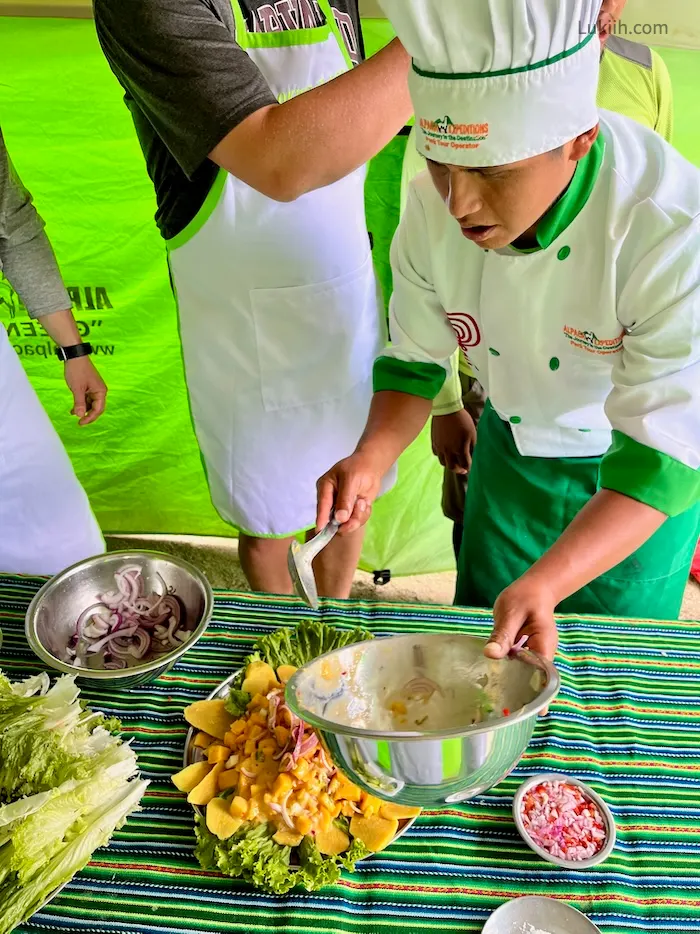
- There is no cell service for 98% of the trail, so you can immerse yourself in the present moment. Learning about the various Incan sites and ruins will also deepen your appreciation for the impressive engineering.
- Conquering the grueling trail to reach one of the world’s most remarkable ruins is highly rewarding. The hike is challenging, but you will otherwise be pampered (e.g., the porters will carry your equipment, your tents will be set up, and the feasts are fantastic).
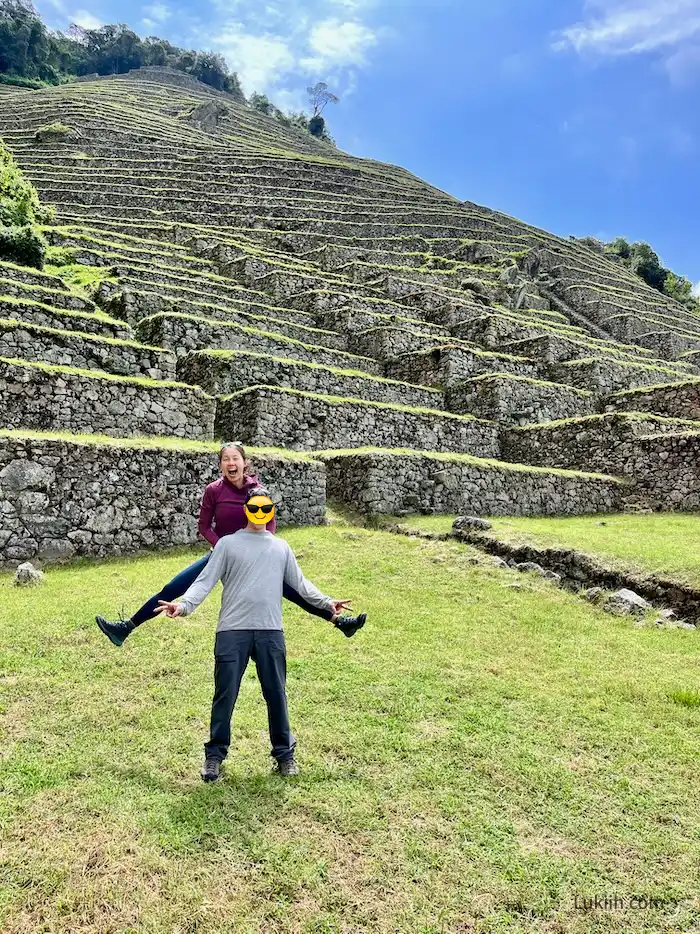
- The hike is strenuous at high altitudes, so most people will feel exhausted at some points, no matter how fit you are.
- Machu Picchu is also always crowded. Hikers are among the first to reach the ruins, but you’ll still share it with everyone who got there by bus and train.
- Camping is required as there are no cabins along the trail.
- There are also several risks to keep in mind.
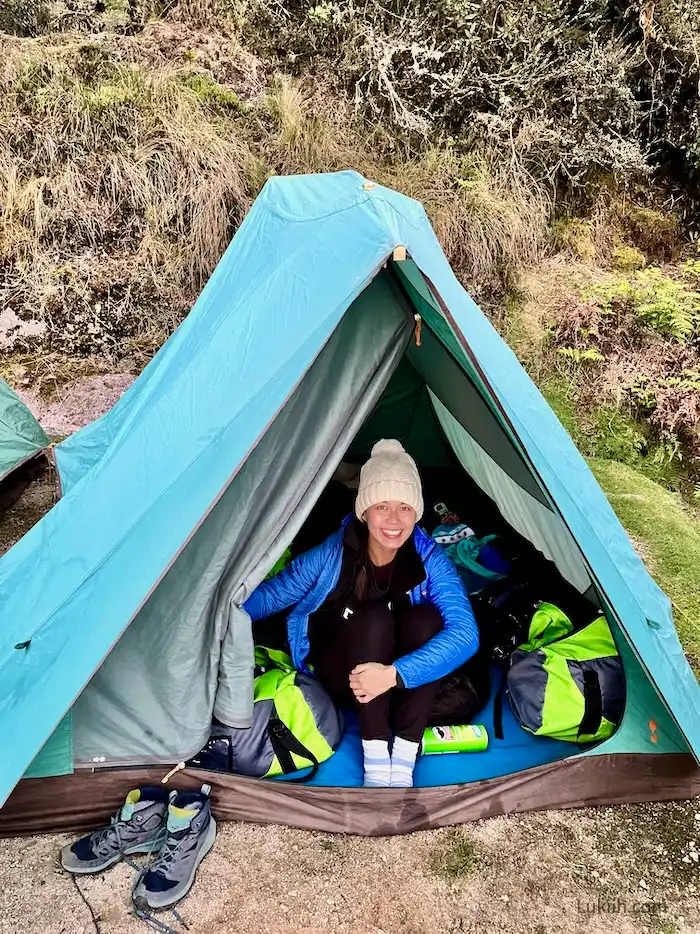
Every trekker requires a permit to hike the Inca Trail, which they can get through a tour operator. The tour costs between $650 and $1,500, and a standard one is roughly $700 to $800. This pays for the:
- Knowledgable guides and chefs
- Porters who carry everything
- Hiking permits
- Camping equipment
- Machu Picchu’s $45 adult entrance fee
If you pay less than $650, the tour operator is likely not paying its porters well. This is not socially responsible as they’re often indigenous Quechua-speaking locals from surrounding villages.
I booked my tour with Alpaca Expeditions and paid $870. The tour cost $715, and I gave $155 for tips (see the tipping guide below). I found them professional and engaging, and I happily recommend them.
Due to protests that impacted my trek, I encountered challenging situations, which allowed me to see how capable Alpaca Expeditions was at ensuring my safety.
Tour operators have Inca Trail licenses that are renewed annually. There are over 200 licensed operators, varying in quality, experience, and commitment to social responsibility.
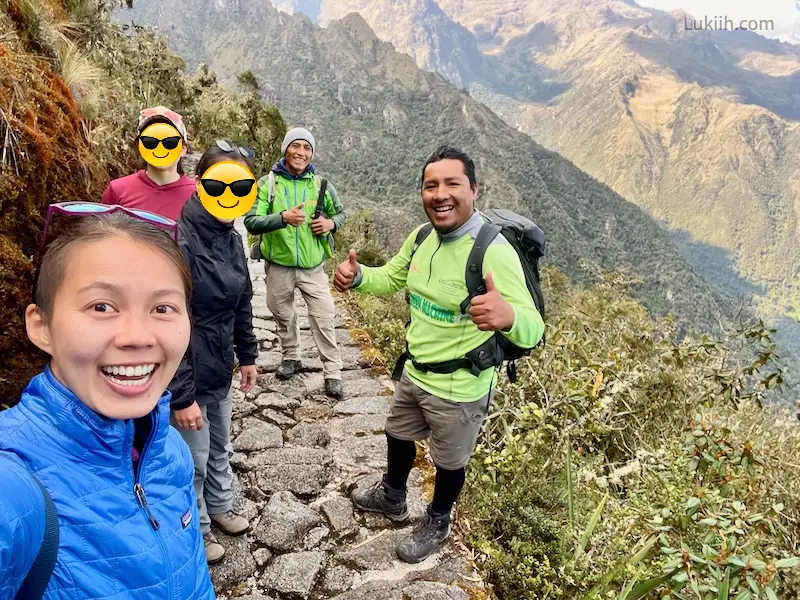
See my Peru trip expenses.
- You need nontrivial skills and fitness to complete the trek.
- The primary skill required is knowing how to adjust to high altitude as the trail reaches a maximum altitude of 13,828 feet.
- It’s a challenging four-day, 26-mile hike requiring a reasonable level of physical fitness. Training is necessary for some people. Alternative routes to Machu Picchu exist.
- The Inca Trail begins with a bus pick-up around 5 am in Cusco. You are driven 3 hours to kilometer 82 on the railroad, aka “Camino Inca,” which is the start of the trail in Aguas Calientes.
- You’ll need a permit, which you can only get through a licensed guide. Book a guide 3-4 months in advance. There’s more demand than permits available every year. Pack and wear appropriate clothes and shoes for the four-day trek.
Book guides even earlier if you want to hike during the most popular months, June, July, and August. Note that the trail is closed every February for recovery.
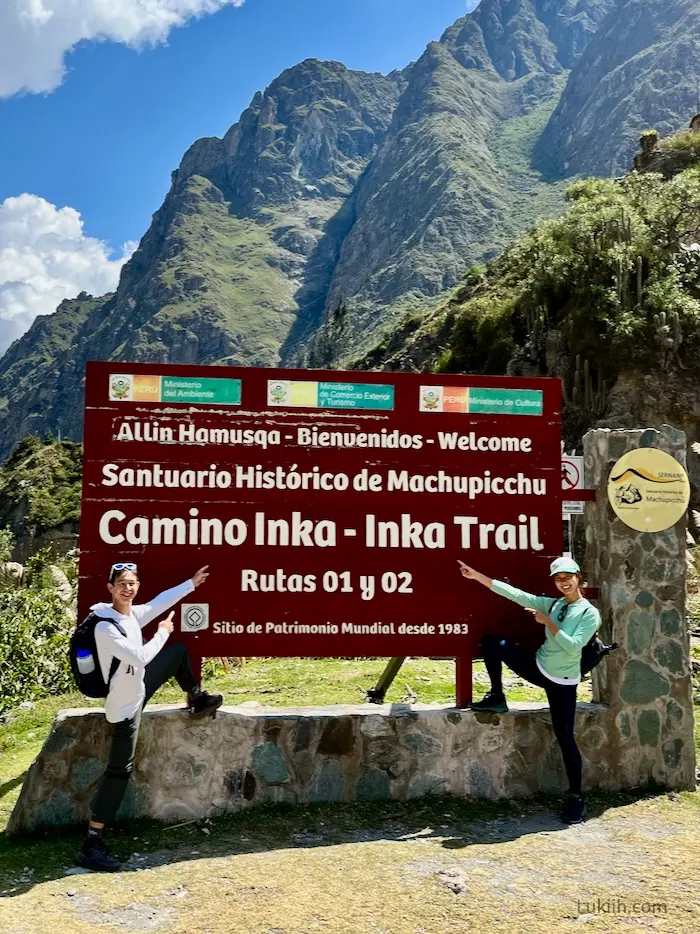
How To Guide & Tips
Interested in hiking the Inca Trail after reading my review? Below is a practical how-to guide and firsthand tips.
- What Routes Exist
- What Is Camping Like
- What Are Facilities Like
- How Much to Tip
- What Are the Risks
- What To Pack
What Routes Exist
The classic Inca Trail I reviewed above is the most popular route. Three other less well-known routes to Machu Picchu exist if you want something easier or more challenging.
- 4-Day Classic Inca Trail – Here’s what you can generally expect on the classic trek:
| Day 1 | Day 2 | Day 3 | Day 4 | |
|---|---|---|---|---|
| Hiking Time | 6-7 hrs | 7-8 hrs | 5 hrs | 5 hrs |
| Distance | 7 miles | 10 miles | 6 miles | 3 miles |
| Elevation Gain | 1,900 ft | 3,660 ft + 1,320 ft | -3,300 ft | -856 ft |
| Difficulty | Moderate | Hard | Moderate | Easy |
- 2-day trail – This easy-to-moderate trek covers the latter segment of the classic route. It’s a good option for those with limited time or who want a shorter hike.
- 5-day trail– This moderate trek follows the classic route but stops and camps at Llactapata, a bonus Inca site.
- Salkantay Trek – This is a five-day difficult trek with spectacular mountain scenery. The route adds 20 miles and has a higher elevation than the classic trek.
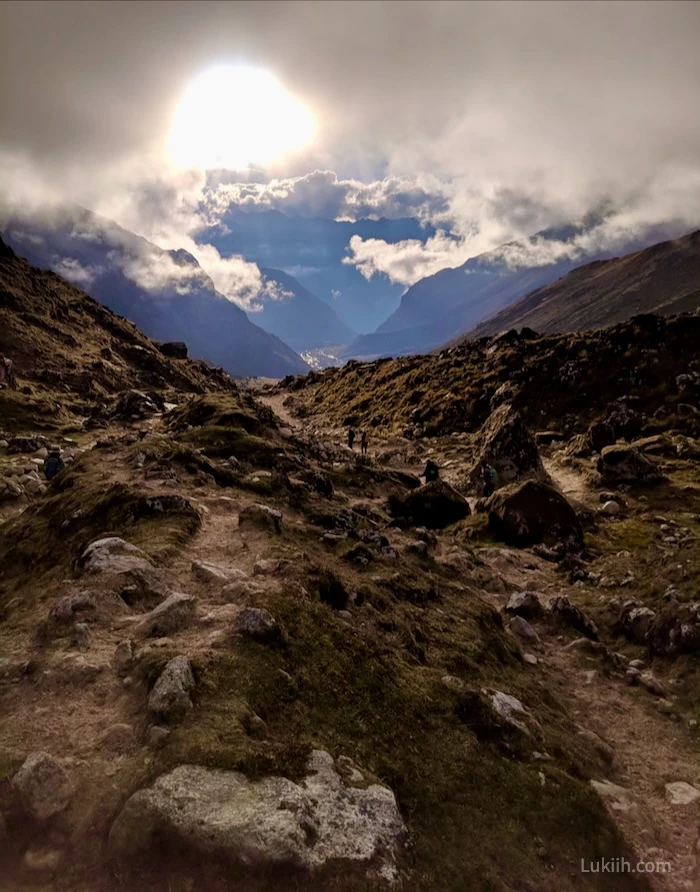
What Is Camping Like
Camping (or glamping) is the only accommodation option on the Inca Trail. You are on a remote mountain, so no hotels or lodges exist along the route.
Some tour companies specialize in providing luxury camping experiences that include inflatable mattresses. These typically cost over $1,000.
If you don’t have much camping experience like me, here are three things to know about a standard Inca Trail camping experience:
- 🔦 You don’t need to bring most camping equipment – Tour companies will provide essential equipment, including chairs, tables, a sleeping bag, and a two-person camping tent that you can share with someone you know or another same-gendered person in the group.
- ⛺️ You won’t have to set up your tent – No matter how fit you are, porters will be faster and better at hiking the trail than you, so all your equipment will arrive at each campsite before you.
- 🏕️ You’ll be sharing campsites with others – There are a limited number of campsites, so all tour groups will share spaces and facilities. Your group will stay close together.

What Are Facilities Like
The shower and toilet facilities on the Inca Trail will vary by stopping point and campsite.
- 🚽 Prepare to use squat toilets – Given the trail’s remoteness and high foot traffic, they’re not the cleanest toilets you’ve used.
Make sure to bring toilet paper and hand sanitizer. Some tour operators will bring TP for the group, but carrying some on you is convenient.
- 💧Don’t expect hot water – Most campsites do not provide a shower facility. When they do, only cold water is available. Many hikers, including myself, forgo showering.
Bring large wet wipes. You’ll be very thankful when you sweat a lot under several layers of clothes during the colder days.
- 💵 There are regular toilets (for a small price) – Some locals set up toilets for trekkers to use for about $0.50 per person on some parts of the trail, but those are rare. Carry Peruvian soles if you want to use these.
How Much to Tip
Tipping is customary in Peru, so you should expect to tip. The Inca Trail tipping guideline below is based on my experience and the guidelines of several established tour companies.
| Suggested | My Tip | Etiquette | |
|---|---|---|---|
| Guides | $20/guide | Head guide: $55 Guide 1: $35 Guide 2: $35 | Tip individually |
| Chefs | $15 total | $20 | Tip individually |
| Porter | $10 total | $10 | Tip as a group |
| Total | $65-$85 | $155 |
- 🧭 Guides – The guides are the most knowledgeable people on the trek. They lead you, ensure your safety, and provide historical and cultural knowledge. I encountered challenging scenarios that required the guides to go above and beyond, so I tipped closer to $30 to $60 per guide.
- 🎒 Porters – Porters carry all equipment and supplies on their backs to transport them from one campsite to another. Since you won’t get that much exposure to them (they’re hiking ahead of you), you won’t know who contributed more or less, so it’s best to tip them as a group. My tour had a head porter, so we gave our tips to him to distribute fairly.
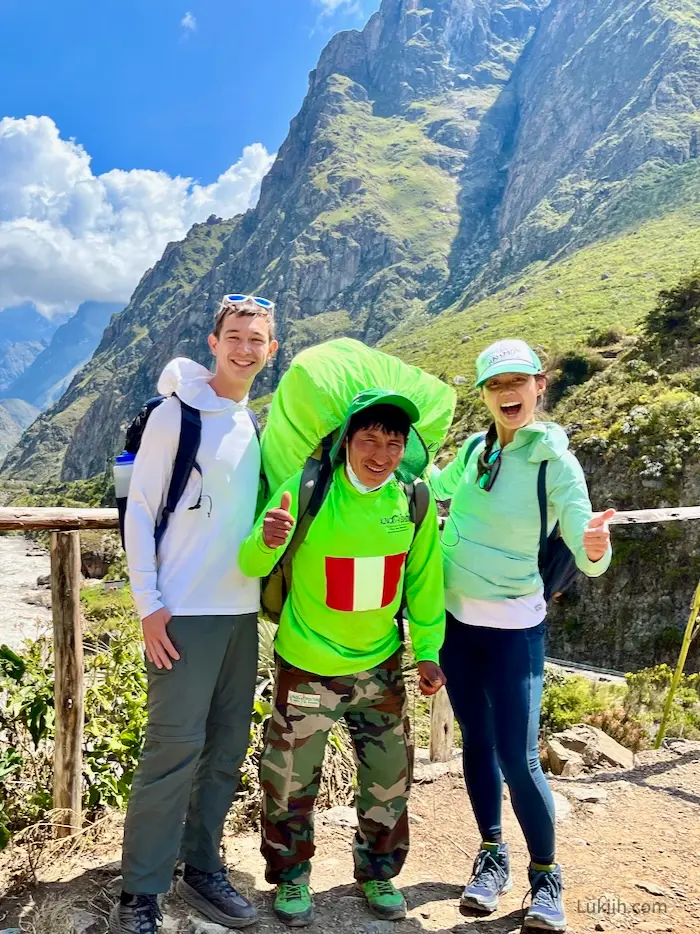
There’s consensus that you shouldn’t overtip porters as they often don’t have the financial education to save, meaning they may end up drinking the excess tip away.
- 👨🍳 Chefs – Tour groups will have an experienced chef who cooks all the food for everyone every night along the hike. They go through nontrivial training to provide their service.
Bring enough cash to tip the porters and chef before the start of the hike, as no ATMs are available on the trail.
What Are the Risks
Inca Trail guides have years of experience, but it’s an unforgiving hike with risks. Here are some terrible scenarios you may run into and an account of the bad one that happened to me.
- 🧠 Altitude sickness – The trail reaches 13,828 feet, so altitude sickness is common. To alleviate symptoms, arrive in Cusco 1-2 days early to get acclimated, drink coca tea, hydrate a lot, and come prepared with medication.
In the US, you will need a prescription from your doctor to access certain kinds of altitude sickness medication. You can find the
- 😥 Physical exhaustion – Some hikers cannot complete the hike on time (here’s an honest account of such an experience.) If you’re training for the trail, carry a daypack, walk on uneven terrain, and hike some hills to best replicate the conditions.
- 🤢 Becoming ill – Unfortunately, an experienced hiker in my group got food poisoning from the food they ate before the trek. The company will ask you to backtrack or carry you depending on your condition.
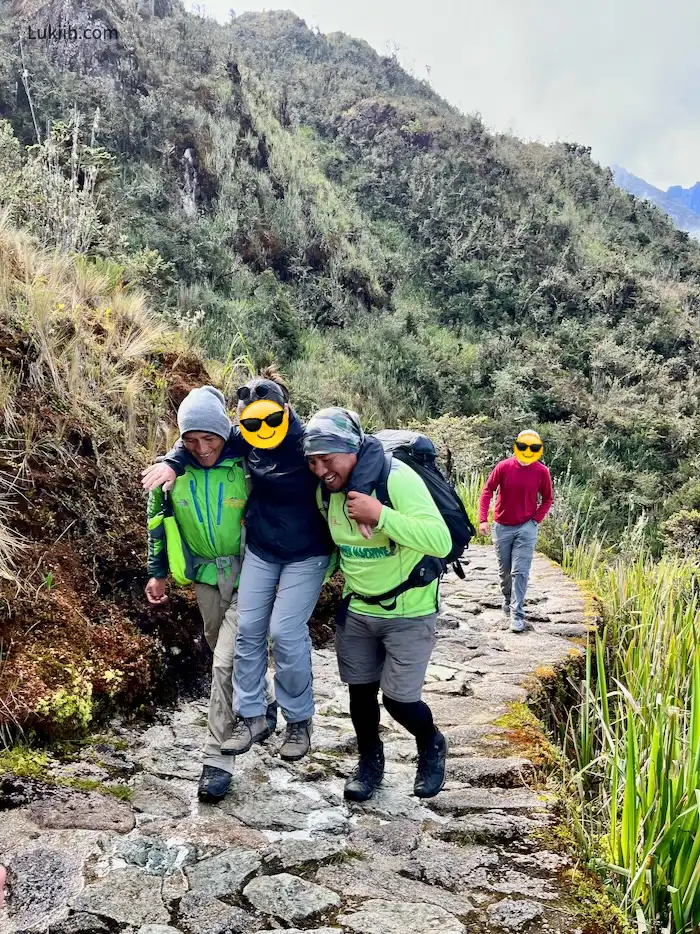
While animals are not allowed on the trail, I’ve heard (but cannot verify) that they can be brought in for specific emergencies to carry sick or injured trekkers.
- ☠️ Deaths – The worst of the bad scenarios is fatalities. Given how many people hike the trail annually, deaths are extremely rare, but they happen. In the past, victims were not paying attention, had preexisting health issues, or were unlucky (e.g., getting struck by lighting).
This is all to say that no matter how tired you are, you should always pay attention to your surroundings while hiking the Inca Trail.
Peru Protests (What Happened To Me)
Unfortunately, protests and strikes in Peru are not uncommon. They can impact your Inca Trail trek by preventing you from reaching the starting or ending point, which happened to me.
Protests at the Start
When my partner and I landed in Lima, Peru’s air traffic control went on strike, and all flights were canceled for the day, so we couldn’t reach Cusco. Alternative transportation was not viable for safety or logistical reasons.
After hours of calling and racking up $50 worth of phone bills, we got on a next-day flight that put us behind my trekking group’s schedule by 5-6 hours. With some convincing, my tour company was kind enough to leave two porters and a guide behind to meet us at Cusco.
We made our trek thanks to our tour company’s willingness to coordinate with us, our relatively strong hiking ability, and the strike ending within a day.
Here’s what I learned from this experience:
- Avoid traveling during the Peru holidays – Protests are often planned during a holiday or busy travel time, giving the group on strike more negotiation leverage. I traveled to Cusco during Peru’s Easter holiday when we ran into protests.
- Arrive in Cusco two to three days early – Arriving more than a day in advance will give you more time to respond to a last-minute strike.
Protests at the End
After finishing our 26-mile trek, we received news that the trains back to Cusco were not running due to more protests. We were given the option to either stay in Aguas Calientes indefinitely or hike an additional four hours to a bus stop to catch an eight-hour ride through the backroads.
Most of our group chose the second option, and thus, we began our 12-hour journey back to Cusco after an exhausting four-day trek. The additional hike and bus ride were exhausting, frustrating, and anxiety-inducing for everyone.
Here’s what I learned from this experience:
- Pack plenty of snacks and water – It wasn’t immediately apparent how long the journey back to Cusco would take. After a four-day hike, you will get hungry quickly.
- If you’re risk-averse, stay in Aguas Calientes – The unexpected, additional hike on the railroad tracks was unpleasant. The bus ride through the backroads was terrifying for even the most adventurous of us.
- Pack headlamps – We spent two hours walking in almost complete darkness by the railroad track.
What To Pack
One of the best ways to ensure an enjoyable Inca Trail trek is to pack well while staying under your bag’s weight limit.
By law, each porter can carry up to 44 lbs of weight. Alpaca Expeditions limited each hiker to 15 lbs, including a sleeping bag and pad, for porters to carry.
Here’s a comprehensive packing list:
- Waterproof hiking shoes – They need to be comfortable for four days; test them in advance so you don’t get blisters. Some ankle support is recommended.
- Comfortable shoes – You’ll spend 3-5 hours daily at the campsite, where you’ll want to wear something other than your hiking shoes. Something lightweight and easy to slip on and off, like a pair of Crocs, is great.
- Warm hiking socks (4x) – Maximize your comfort with hiking socks that have cushions and are moisture-wicking. Ensure they’re warm for chilly nights.
Even during the warmest months, the Inca Trail rarely exceeds 70 °F. Most nights will dip below 40 °F.
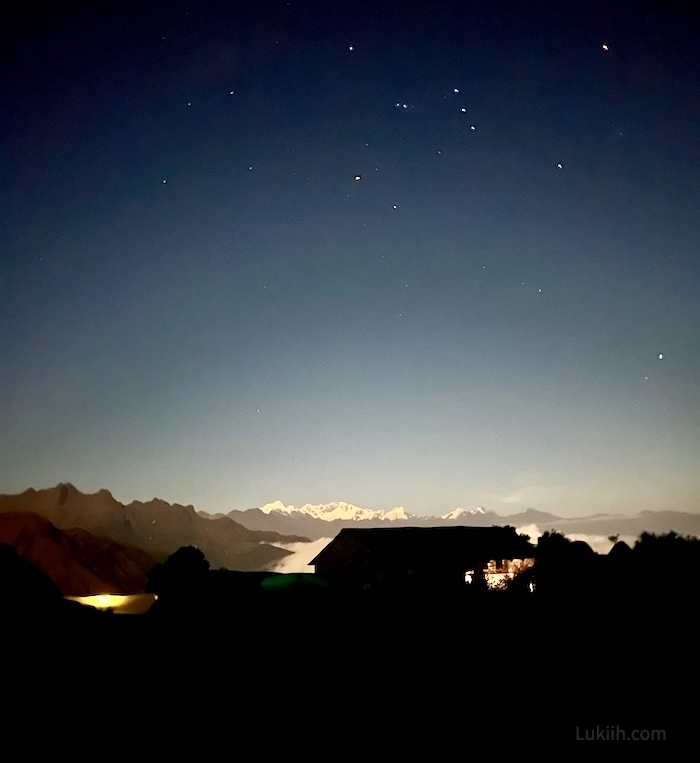
- Warm base layer (top and bottom) – I brought a Merino wool top and bottom, which kept me warm but didn’t become suffocating when it was hot.
- Moisture-wicking tops (3-4x) – I brought 2 lightweight athletic tanks and 2 sun hoodies. It was nice having fresh clothes daily, but it’s not necessary.
- Hiking pants and leggings (2-3x) – Bring at least one bottom for warmer weather and one for cooler weather. I brought a pair of hiking pants and leggings.
- Undergarments (4x)
- Warm, down jacket – You’ll need a warm jacket at high elevations. If it gets cold enough, you might even sleep in it.
- Fleece layer – You’ll want another layer underneath your down jacket for colder nights.
- Warm hat – Same reasoning as above.
- Waterproof gloves – These are good to have at high elevations, and you’ll especially want them if you’re using hiking poles.
- Sun hat – There are days when you’ll be exposed to the sun without shade for hours.
- Rain gear – Rain is common even during the dry season. Some operators provide rain ponchos. I carried a light rain jacket that I could easily layer over my down jacket or fleece as a windbreaker.
- Wet wipes – Since you likely won’t shower, bring large wet wipes to feel refreshed.
- Soap – Bring a bit of soap to wash your face and hands every night.
- Toothbrush and toothpaste
- Original passport – Your passport will be checked before you start your hike, as foreigners need a valid one to enter Machu Picchu.
- Battery pack – There are no places to charge on the trail, so bring a fully charged battery pack to take photos or to recharge your headlamp.
- Earplugs (optional) – Your group’s tents will be set up close to each other, so if you’re a light sleeper, you’ll want them.
- Sleeping mask (optional) – If you have trouble sleeping in tents or outside, a sleeping mask can help.
- Quick-dry towel (optional) – Bring a quick dry towel to dry your face and hands after washing them.
- Large plastic bags (optional) – Bring one to separate dirty and clean clothes.
- Hiking poles (optional) – A couple of us didn’t have hiking poles and were fine, but in retrospect, they would have been helpful.
Daypack Items
Aside from the bag that your porter will carry, you’ll need to carry a daypack. Here are the items to pack in it:
- Reusable water bottle – Your operator will provide filtered water, but you need to bring your own bottle to get it refilled. Because you only get a refill once a day, I recommend bringing a large water bottle like this one (which is what I brought).
- Sunscreen – If the weather holds up, you’ll be exposed to the sun for hours. This is a great sports sunscreen, but if you want something lighter since you likely won’t shower, I packed this sunscreen.
- Sunglasses – Same reasoning as above.
- Headlamps – You’ll need headlamps to navigate at night and in the mornings since you’ll always wake up before sunrise.
- Hand sanitizer – The facilities often don’t have soap, so bring hand sanitizer.
- Toilet paper – Bring a stash of TP, as most facilities won’t provide them. I carried a few in a zip-lock bag.
- Cash – Bring cash to tip your guides, porters, and chefs.
- Altitude sickness medication (optional) – You need a prescription for these in the US, but you can get them over the counter in Peruvian pharmacies.
The Inca Trail is an unforgettable experience, and there are good reasons why it’s on many people’s bucket lists. Good luck!
Peru Trip Planner 2024
To make your travel preparation easier, download the trip planner below. It has destination-specific travel information, itinerary, map, and packing list.
My trip planners are built on Notion, which I use for all my travel planning. I genuinely love this tool and creating an account is free.
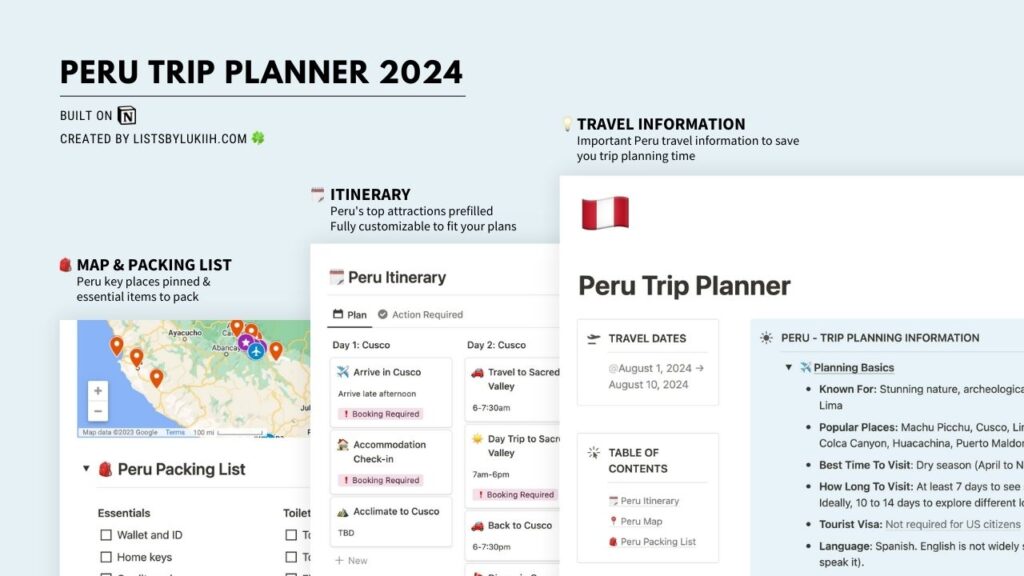
🧋 Support Lukiih
Lists by Lukiih is a humble website that I fund with my own savings. If you find my tips helpful, I appreciate you saying thanks with a bubble tea!
